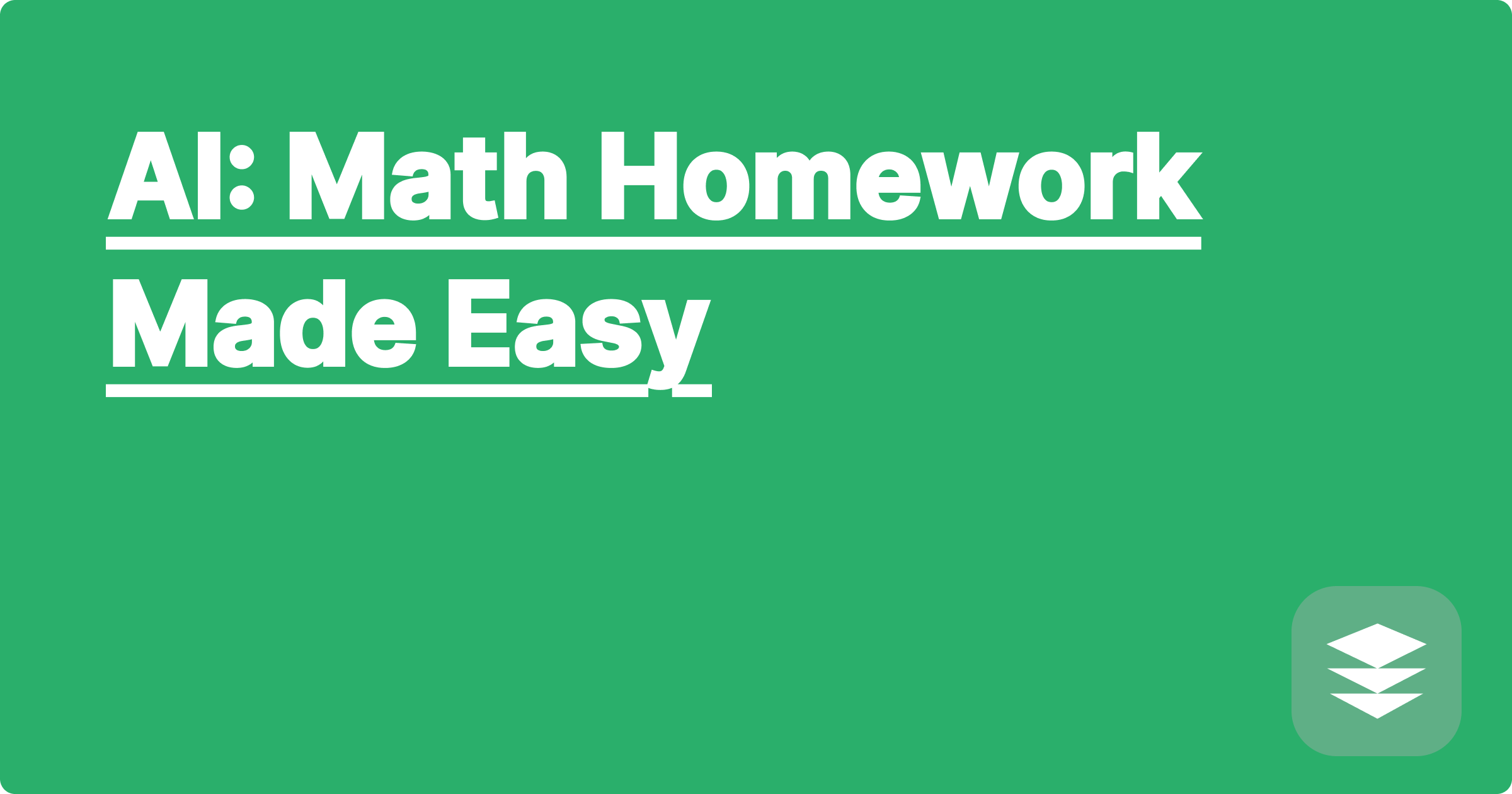
STEM fields often present challenging mathematical problems that can be time-consuming and complex. From intricate calculus equations to statistical analysis, these problems can sometimes feel like roadblocks on the path to understanding core concepts. Artificial intelligence offers a new avenue for tackling these challenges, providing powerful tools that can assist STEM students and researchers in navigating the complexities of mathematical problem-solving. AI can offer not just solutions but also valuable insights into the underlying principles, fostering a deeper understanding of the subject matter.
This shift in approach to mathematical problem-solving is particularly relevant in today's fast-paced academic and research environment. STEM students face increasing pressure to master complex material, while researchers need to efficiently analyze vast datasets and develop innovative solutions. AI-powered tools can significantly reduce the time spent on tedious calculations, freeing up valuable time for critical thinking, experimentation, and exploration of more advanced concepts. By leveraging AI, students and researchers can optimize their workflow and focus on the higher-level thinking that drives innovation and discovery.
Mathematics forms the foundation of numerous STEM disciplines, and a strong grasp of mathematical concepts is crucial for success. However, the sheer breadth and depth of mathematical knowledge required can be overwhelming. Students often struggle with applying abstract concepts to practical problems, while researchers may encounter complex equations that require specialized software or extensive manual calculations. This challenge is further compounded by the time constraints and pressure to produce results, leading to frustration and potentially hindering progress. Moreover, traditional methods of learning mathematics often rely on rote memorization and repetitive exercises, which can fail to foster a deep understanding of the underlying principles. The need for a more efficient and insightful approach to mathematical problem-solving is clear.
Artificial intelligence offers a powerful suite of tools to address these challenges. AI-powered platforms like ChatGPT, Claude, and Wolfram Alpha can provide step-by-step solutions to a wide range of mathematical problems, from basic algebra to advanced calculus and differential equations. These tools can not only solve equations but also explain the underlying concepts and provide visualizations that aid in understanding. Furthermore, AI can assist with data analysis, statistical modeling, and even code generation, making it a valuable asset for both students and researchers. By leveraging the capabilities of these AI tools, the process of mathematical problem-solving becomes more efficient, accessible, and insightful.
Using AI for math problem-solving is surprisingly straightforward. First, clearly define the problem you want to solve. This might involve writing out the equation, describing the problem in natural language, or providing the relevant data. Next, choose the appropriate AI tool for the task. For example, Wolfram Alpha excels at symbolic computations and complex calculations, while ChatGPT and Claude are better suited for explaining concepts and providing step-by-step solutions in a conversational format. Input the problem into the chosen AI tool, ensuring that the input is accurate and formatted correctly. The AI will then process the input and generate a solution, often accompanied by explanations and visualizations. Finally, review the solution provided by the AI, paying attention to the steps and logic involved. This allows you to learn from the process and gain a deeper understanding of the underlying mathematical concepts.
Consider a student struggling with a calculus problem involving integration. They can input the integral into Wolfram Alpha, which will not only provide the solution but also show the steps involved in the integration process. For instance, integrating the function x^2 with respect to x can be inputted as "integrate x^2 dx." Wolfram Alpha will return the result (1/3)x^3 + C, where C represents the constant of integration. Similarly, a researcher analyzing a large dataset can use AI tools to perform statistical analysis, identify trends, and generate predictive models. For example, they could use ChatGPT to understand how to apply a specific statistical test or use Claude to generate code for data visualization. Even complex problems involving differential equations, like solving y'' + y = 0, can be tackled by AI, providing solutions like y = Acos(x) + Bsin(x).
Integrating AI tools into your STEM workflow requires a strategic approach. Don't simply rely on AI to provide answers without understanding the underlying concepts. Instead, use AI as a learning aid, focusing on understanding the steps involved in the solution process. Verify the results provided by the AI and compare them with your own understanding. This will help you identify any gaps in your knowledge and reinforce your learning. Experiment with different AI tools to find the ones that best suit your needs and learning style. Remember that AI is a tool, and its effectiveness depends on how you use it. By combining AI with traditional learning methods and critical thinking, you can maximize your academic potential and achieve a deeper understanding of STEM subjects.
In conclusion, AI is transforming the landscape of STEM education and research by providing powerful tools for tackling complex mathematical problems. By understanding the capabilities of these tools and integrating them strategically into your workflow, you can significantly enhance your learning and research capabilities. Explore the various AI platforms available, experiment with different approaches, and embrace the potential of AI to unlock new levels of understanding and innovation in your STEM journey.
AI: Your Coding Homework Buddy
AI: Automate Engineering Tasks